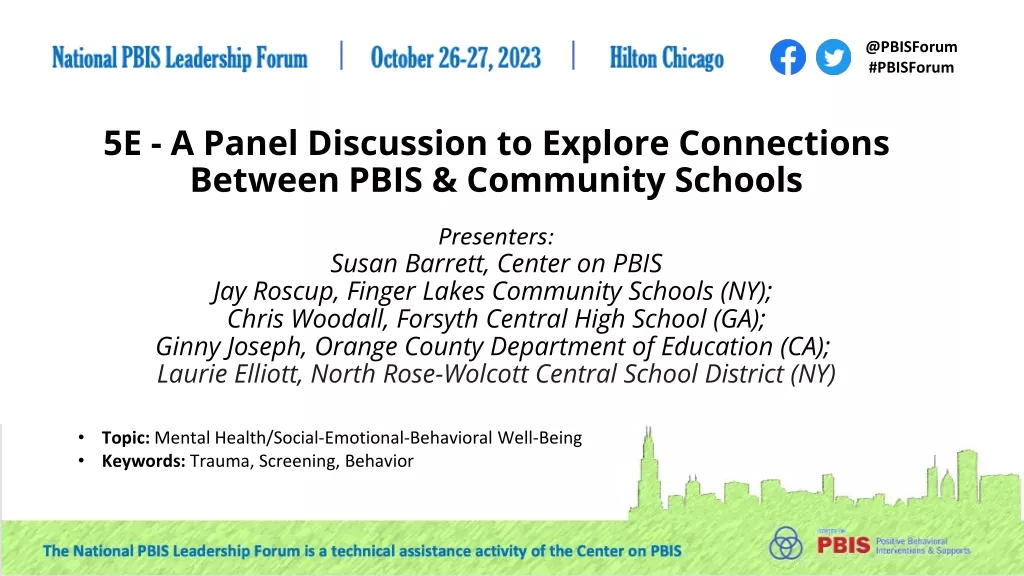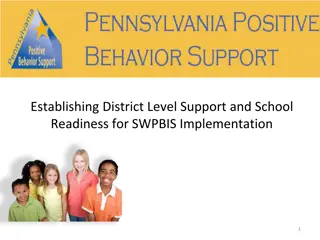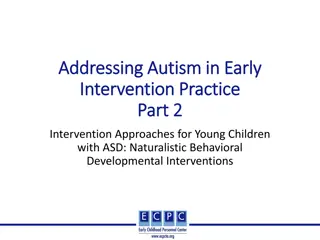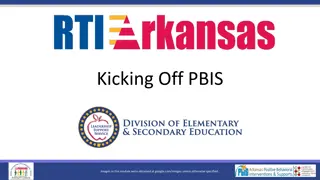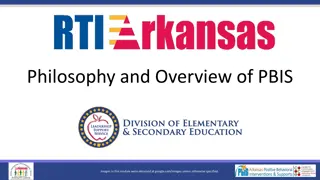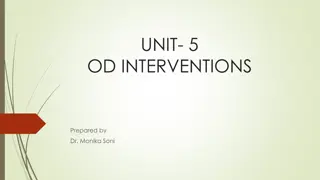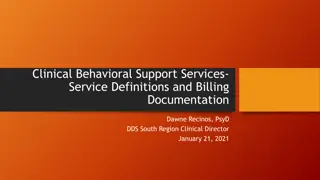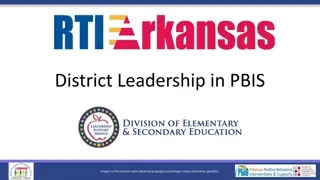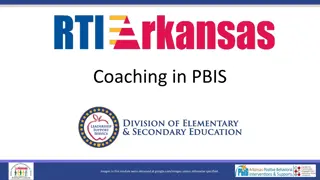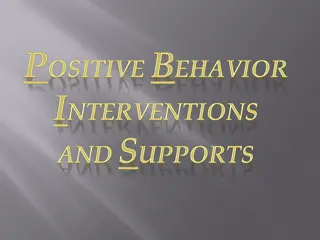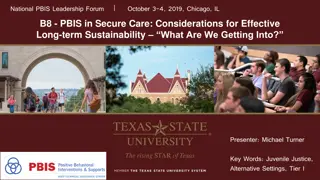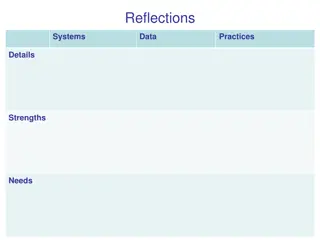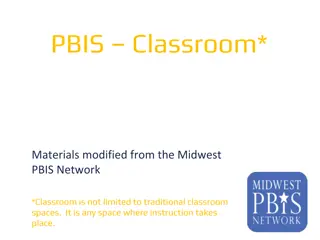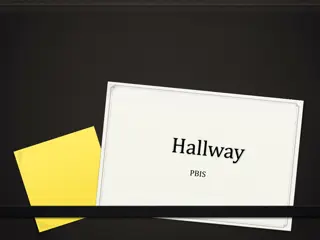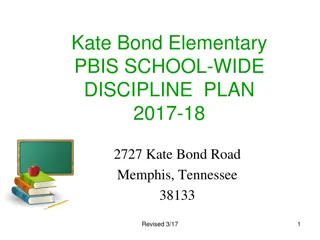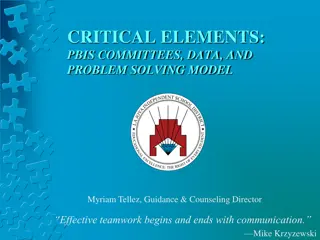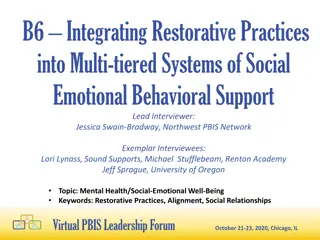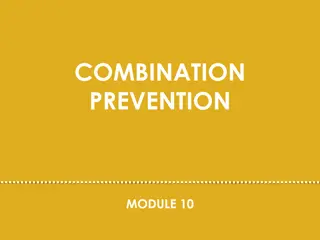Introduction to Positive Behavioral Interventions & Supports (PBIS)
A comprehensive guide to Positive Behavioral Interventions & Supports (PBIS), discussing its implementation, benefits, and impact on student behavior, school climate, and teacher consistency. Explore why PBIS is necessary, current status, challenges, successful strategies, and the tools to improve overall school environment.
Download Presentation

Please find below an Image/Link to download the presentation.
The content on the website is provided AS IS for your information and personal use only. It may not be sold, licensed, or shared on other websites without obtaining consent from the author.If you encounter any issues during the download, it is possible that the publisher has removed the file from their server.
You are allowed to download the files provided on this website for personal or commercial use, subject to the condition that they are used lawfully. All files are the property of their respective owners.
The content on the website is provided AS IS for your information and personal use only. It may not be sold, licensed, or shared on other websites without obtaining consent from the author.
E N D
Presentation Transcript
Positive Behavioral Interventions & Supports An Introduction to PBIS Images in this module were obtained at google.com/images unless otherwise specified.
What Is Your Goal? Do you want to change student behavior? improve school climate? increase consistency among teachers?
What Is Your Status Quo? The behavior of students is (bad/average/good). Grades and test scores are (bad/average/good). Attendance is (bad/average/good). There (are/aren t) common behavior expectations. Classroom management (is/isn t) consistent. Staff response to student behavior is (consistent/inconsistent). (No/few/many) students are receiving interventions. Morale is (bad/average/good). School climate is (bad/average/good). There (is/isn t) a common purpose or philosophy.
What Hasnt Worked? Zero tolerance policies & exclusion may lead to worse behavior. result in loss of learning time. don t help the student. How many things have you tried?
Schools That Are Doing Well It s NOT because they care more . It s NOT because they have more advantages It s BECAUSE they have the right tools!
What Can You Gain? Clear, common behavioral expectations Clear, consistent responses to behavior Appropriate supports for all students Collaborative data-driven problem solving More time for teaching More positive environment Better grades, test scores
Try A New Philosophy Implementing PBIS requires a change in philosophy; PBIS is a proactive and positive approach to discipline. Where do you start?
Organize Your Environment Put systems and practices into place to support all students.
Guiding Questions What student outcomes do we want? What supports will help reach these outcomes? How will we deliver supports? How will we know if they are working?
Desired Outcomes: Social Competence Academic Achievement Outcomes Supporting Data-Based Decision Making How will you know if things are working? Supporting Staff Behavior How will you support staff so they can support students? Data Systems Practices Supporting Student Behavior What practices will support students?
Levels, Or Tiers, Of Interventions PBIS is for all students! PBIS starts with PREVENTION for all students. Everyone receives instruction in appropriate behavioral expectations. Some students may need more support.
A Continuum Of Practices: 3 Levels Of Prevention Tier III: Individualized supports for students engaging in dangerous or threatening behaviors. Tier II: Targeted supports for students with non-serious repetitive behaviors. Tier I: Universal tier. Core instruction (general education) for all students.
Why Have A Universal Tier I? Do students know expected behavior? Or do they just know what not to do? Is there planned behavioral instruction? Is there consistency in procedures? How do you know?
Consistency Matters If different teachers have different expectations, how do students know what to do? If the expectations at home are different from school, how do students know what to do?
Why Teach Behavioral Expectations? If a child doesn t know how to read, we teach. If a child doesn t know how to swim, we teach. If a child doesn t know how to multiply, we teach. If a child doesn t know how to drive, we teach. If a child doesn t know how to behave, we Why can t we finish the last sentence as automatically as we do the others? teach? punish? Tom Herner, 1998
What Is Required? A common purpose/philosophy Leadership team Expected behaviors defined, modeled, taught, & reinforced Students behavior addressed consistently Decisions/actions based on data
Make A Commitment Positive, inclusive, collaborative environment Preventive, proactive discipline Consistency in procedures and practices
Leading The Process The PBIS Team Represents ALL Drives implementation process Uses data Does regular evaluation Provides staff support and professional development
Tier I Focus Be consistent and predictable Teach expected behaviors Prevent inappropriate behaviors Improve classroom strategies Maximize student achievement Focus on the entire school (and classrooms), NOT individual children.
Teaching Behavior Make it clear and simple. Define & clarify behavior expectations Teach & model expectations in all settings Let students practice & give them feedback
Addressing Students Behavior How do you let students know if they did understand their math lesson? if they didn t understand their math lesson? if their behavior IS or ISN T correct???
Responding To Behavior Preventive, proactive practices: Acknowledge appropriate behavior Use teaching moments for misbehavior Use consistent, appropriate consequences
Data-Based Decision Making Don t guess or assume! Record & analyze discipline data Define precise problems Set goals Evaluate progress
Evaluation Is Key! Tiered Fidelity Inventory (TFI) Used over time to guide implementation Improves sustainability Self Assessment Survey (SAS) Behavioral infractions
PBIS Is School-wide AND Classroom Focuses attention on all school areas Increases consistency across all areas of school Gives teachers tools to create classroom environments with Consistent expectations Consistent rules & procedures Learning encouraged Distractions minimized Inappropriate behaviors minimized
PBIS Takes Time Implementing Tier I PBIS can take up to three to five years.
PBIS Takes Time: Stages Of Implementation Should we do it? Do we need to improve school climate? Establish team, create behavior expectations, lesson plans, and acknowledgement systems, set up data collection system Work to do it better! Kick-off assembly, teach lessons, monitor behavior Work to do it right! For more information on implementation, see http://nirn.fpg.unc.edu/learn-implementation/implementation-stages
1st Step: Get Training Arkansas has resources PBIS mentors, networks, National Center, etc.



